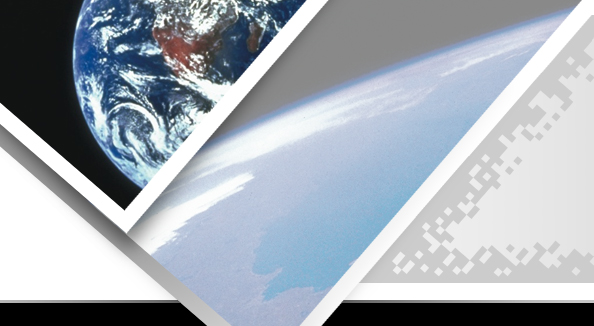


 |
 |
 |
 |
 |
 |
 |
 |

My thirty+ years of successful R&D strategy formulation and program implementation for DOE, NRC, NASA, and NNSA enables me to navigate effectively within these four major federal R&D organizations. This "bundle" of navigation skills includes:
Technology readiness and technical maturity assessments are rigorous multidisciplinary evaluations of the state of development and deployment readiness of a specified technology or technology suite. Correctly executed, technology readiness assessments deliver objective information essential for R&D strategy development, technology development roadmapping, technology deployment decision-making, and technology portfolio investment analysis. Various technical maturity scales have been developed and utilized in diverse industries.
Strategic planning, done well, can provide critical direction and
prioritization for research and technology development activities –
enabling wise stewardship and use of limited human and
fiscal resources. My understanding of the global and national energy-environmental nexus, familiarity with the federal energy R&D complex, and
understanding of federal and private sector missions and cultures, enables me to
formulate innovative, high-impact strategies for basic and applied research, and advanced technology development. I've had the pleasure of leading or co-leading a
number of important technology roadmapping activities for federal
sponsors. The most recent was the April 2010 DOE Office of Nuclear Energy
(DOE/NE) Nuclear Energy Research and Development Roadmap (a report to Congress). My work with the DOE Office of Environmental
Management, the DOE Oak Ridge Operations Office, and the local east
Tennessee business community in developing the Tennessee Valley Energy
Enterprise (TVEE) regional energy park concept is another example. I also contributed as a
panel member to the development of the 2005 NASA High Energy Power and
Propulsion Capability Roadmap, and led the development of the 2004 DOE/NE
Integrated Research, Development, and Demonstration Plan (IRDDP) for
Space Power and Propulsion Reactor Technology.
My experience at ORNL (a lab that excels in integrating basic science,
advanced modeling and simulation, and applied engineering research)
equips me to move beyond "PowerPoint" visioneering and strategic planning to formulation and implementation of game-changing R&D projects and programs. This skill set begins with enlightened team building, is facilitated by sound project management practice, and is constantly driven by a zeal for excellence. One recent example of my expertise in this area is the successful formulation and implementation of the Coupled End-to-End (CETE) Demonstration at ORNL. This DOE-funded R&D project was the first successful demonstration of the reprocessing of commercial light water reactor spent fuel and subsequent refabrication of mixed oxide reactor fuel, with a process that did not produce or rely upon the production of pure separated plutonium.
Communication is at once the most basic and the most difficult of human behaviors. The accelerating pace of knowledge discovery, coupled with the ubiquitous spread of information technology, has created an overloaded and information-weary society. Information overload has become the bane of leaders and decision-makers everywhere. Thus the ability to efficiently and effectively communicate is a fundamental key to success in any scientific and technical endeavor. All communication begins with active listening. Or as Steven Covey says, "seeking to understand before we seek to be understood." Next, the ability to distill and prioritize knowledge is key to effectively communication. Mastery of the technical "tome", the one-page "admirals brief", the thirty-second "elevator speech" are essential to success in different environments. Effective use of written, visual, and verbal communications is a requirement for today's R&D leader. My publications and presentations are witness to my ability to effectively communicate in professional environments. Perhaps just as importantly, the ability to simplify and effectively communicate complex technical information for consumption by non-subject-matter experts and the general public is increasing critical to business success. My numerous interviews with news outlets such as National Public Radio, Popular Science, and international television networks has provided me valuable experience in public outreach and education – experience I routinely put to use to communicate the value of our client's work.
Collaboration and partnering to provide missing capabilities, improve product quality or timeliness, and add value to the client / sponsor is often the key to success. During my 30+ years as an R&D practitioner, manager, and leader, I've had the opportunity to build solid partnerships and successful programs with my colleagues across the DOE national laboratory complex and to develop a sound grasp of the capabilities of the DOE national laboratory system. Moreover, I've had the pleasure of building and leading multi-agency R&D teams and multi-national R&D teams to accomplish goals beyond the capabilities or charter of a single federal agency or nation. Examples include my leadership of the DOE/NASA Inter-agency Space Fission Power Screening Committee, and the Joint U.S./Russian Reactor Based Weapons Plutonium Disposition Program (which also include collaborations with France, Great Britain, and Japan).
Put simply, the foundation for success in the R&D business rests squarely on one's grasp of technical fundamentals. The credibility and effectiveness of an R&D leader hinges on their ability to rapidly learn and efficiently assimilate the diverse knowledge domains of their profession. This requires a quick study, the ability to identify patterns and linkages, and the ability to integrate both "deep" knowledge and "broad" knowledge to yield insights otherwise hidden from view. My particular scientific and technology knowledge domains include:
I live "outside the box". And I have a toolbox of tactics and approaches I employ personally and with teams, to spur innovative thinking. These approaches span the gamut from traditional brainstorming exercises, "What if ...?" exercises, thinking in terms of natural analogies, and mind and concept mapping; to the disciplined use of evolutionary computation-based problem solution and system conceptualization techniques; to the formal integrated discipline of Design Thinking. I find that a key to innovation is relaxing perceived constraints and/or redefining the problem at a higher level to avoid implicitly-encoded (and often hidden) constraints that limit our thinking. I enjoy employing these techniques to assist others in their quest for innovation.
| ||









